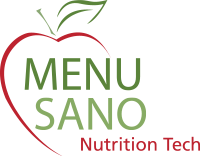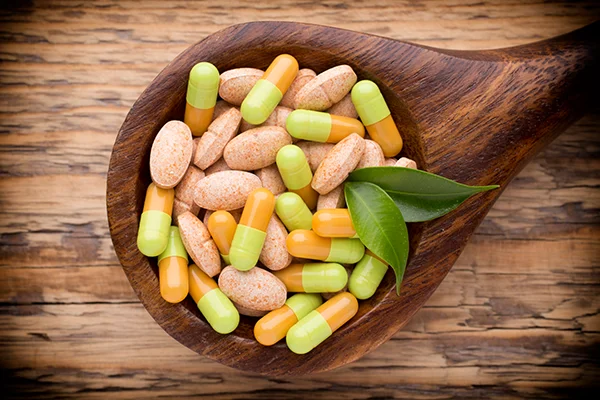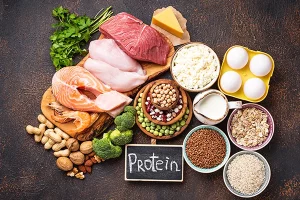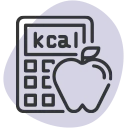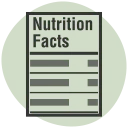Accurate nutrient unit conversions are essential for creating compliant and trustworthy nutrition labels. Whether you are a food manufacturer, restaurant, or supplement producer, understanding how to convert between International Units (IU), micrograms (µg), milligrams (mg), and other measurement forms is a key part of meeting regulatory requirements.Below is a guide to common nutrient conversions based on current FDA labelling regulations.
Key Takeaways
- Use FDA-approved conversion factors when converting IU to micrograms or milligrams.
- Nutrient conversions vary depending on the nutrient’s source (food vs. supplement).
- Correct conversions are critical for compliance, transparency, and consumer trust.
- MenuSano can automate these conversions to save time and reduce errors.
Vitamin A (µg RAE)
Vitamin A can come from different sources, and conversion depends on the form:
- Pre-formed Vitamin A (Retinol): µg RAE = IU × 0.30
- Beta-carotene from food: µg RAE = IU × 0.05
- Beta-carotene from supplements: µg RAE = IU × 0.30
- Alpha-carotene or beta-cryptoxanthin from food: µg RAE = IU × 0.025
These conversions ensure that different vitamin A sources are reported in Retinol Activity Equivalents (RAE) for accurate labelling.
Vitamin D
Vitamin D is now listed in micrograms on nutrition labels. The FDA conversion is:
- µg = IU × 0.025
(Alternatively: IU ÷ 40 = µg)
Vitamin E (alpha-tocopherol)
Vitamin E can be natural or synthetic, which affects conversion:
- Natural (food sources): mg = IU × 0.67
- Synthetic (supplements): mg = IU × 0.45
Niacin (Niacin Equivalents, NE)
Niacin content can come directly from niacin itself or be derived from the amino acid tryptophan:
- From niacin: mg NE = mg niacin
- From tryptophan: mg NE = mg tryptophan ÷ 60
Folate (Dietary Folate Equivalents, DFE)
Folate is measured differently depending on its source:
- From food (natural folate): mcg DFE = mcg food folate
- From folic acid (supplements): mcg DFE = mcg folic acid × 1.7
Why Accurate Conversions Matter
- Compliance: The FDA requires specific units and conversion methods for nutrient declarations.
- Transparency: Accurate conversions help consumers understand nutrient content.
- Consistency: Using the correct formulas ensures your labels are consistent across products and batches.
Quick Reference Conversion Chart
| Nutrient & Source | Conversion Formula | Output Unit |
| Vitamin A – Retinol (animal) | µg RAE = IU × 0.30 | µg RAE |
| Vitamin A – Beta-carotene (food) | µg RAE = IU × 0.05 | µg RAE |
| Vitamin A – Beta-carotene (supplement) | µg RAE = IU × 0.30 | µg RAE |
| Vitamin A – Alpha-carotene/Beta-cryptoxanthin | µg RAE = IU × 0.025 | µg RAE |
| Vitamin D | µg = IU × 0.025 | µg |
| Vitamin E – Natural (food) | mg = IU × 0.67 | mg |
| Vitamin E – Synthetic (supplement) | mg = IU × 0.45 | mg |
| Niacin – from niacin | mg NE = mg niacin | mg NE |
| Niacin – from tryptophan | mg NE = mg tryptophan ÷ 60 | mg NE |
| Folate – from food | mcg DFE = mcg food folate | mcg DFE |
| Folate – from folic acid (supplement) | mcg DFE = mcg folic acid × 1.7 | mcg DFE |
How MenuSano Can Help
Manually applying nutrient conversions can be time-consuming, complex, and prone to costly mistakes, especially when dealing with multiple products, varying ingredient sources, and evolving regulatory standards. Eliminate the guesswork with MenuSano’s nutrition analysis software by automatically applying FDA-approved nutrient conversion formulas in the background as you enter your ingredients and recipes.
Whether you are converting vitamins from International Units (IU) to micrograms, calculating dietary folate equivalents, or differentiating between nutrient sources such as natural versus synthetic forms, MenuSano ensures the correct factors are applied every time. This automation not only improves accuracy but also speeds up your workflow, allowing you to create compliant nutrition labels in minutes rather than hours.
By reducing the risk of human error, MenuSano helps you maintain transparency and credibility with your customers, meet strict regulatory requirements, and confidently bring your products to market, knowing your nutrition labels are precise and up to standard.
